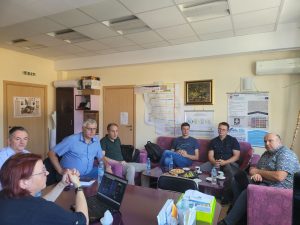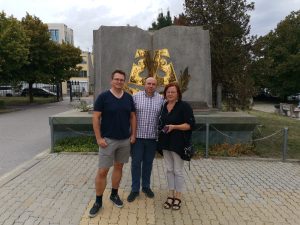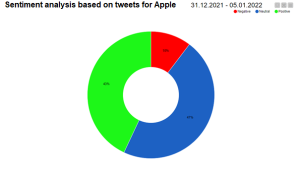Erasmus+ project iBIGworld: Transnational Meeting M4 has been conducted at the University of Library Studies and Information Technologies in Bulgaria
On September 15-16, 2022 Transnational Meeting M4 was held in Sofia (Bulgaria). The Meeting was conducted on the basis of the University of Library Studies and Information Technologies https://www.unibit.bg/
The fourth project meeting was organized by the University of Library Studies and Information Technologies (ULSIT) in Bulgaria. The purpose of this meeting was to summarize the project accomplishments, discuss the experience from the second training activity and the second multiplier event, and finalize the evaluations of the fulfillment of the objectives. The plan for post-project output sustainability was confirmed and signed.
The participants from the University of Nis (UNi), the University of Bielsko-Biala (UBB), and the University of Library Studies and Information Technology (ULSIT) took an active part in the meeting.

Photo. Participants of M4 at the University of Library Studies and Information Technologies..
The link to the agenda of the meeting is below
At first, the local dissemination reports were presented and confirmed by Steering Team.
Then the task performance reports were presented and discussed, paying an attention to the sequential order of the intellectual outputs:
- the requirements for Big Data training course (O2) follow from the survey analysis of O1;
- the framework of Big Data training course is constructed on the matrix competencies-topics from O2;
- guidelines for teachers-student-business at stage O4 are based on the training course O3.

Prof. Vasyl Martsenyuk presented the current state of the project outcomes. He focused attention on the rules of reporting the intellectual outcomes of the projects. Namely, the responsibility for preparing corresponding intellectual outputs lies on the leading organizations: O1 – UBB, O2 – TSNUK, O3 – ULSIT, and O4 – UNi. Also, he remarked on the necessity of arrangement of financial reporting for the project, especially timesheets for the intellectual outputs. The real discussion was devoted to the good practice of reporting multiplier events E1, E2, E3, and E4.
Further, he presented to the participants the sustainability plan for the purpose to postpone the dissemination and exploitation activities of the project to the period after completing the financing of the project by the EC. The link to the sustainability plan is below https://docs.google.com/document/d/1AYHF9lYoeRAN0twpQ6eJA6Oty6bzkMtO/edit?usp=sharing&ouid=101046534126028994548&rtpof=true&sd=true
Prof. Georgi Dimitrov has drawn attention to the preparation and shaping of the final evaluations of the project results. The participants of the meeting remarked on the significant contribution of the team of ULSIT and the leading role when developing the framework of the Big Data training course.
Prof. Dejan Rancic has presented the activities fulfilled by the team of UNi. The other participants of the meeting have highly estimated the contribution of the UNi team to the piloting stage of the project, especially when organizing C2 and C3 training activities.
Financial management report was discussed. The participants have agreed on the order of the preparation and filling in of the final financial report with the help of the Mobility Tool platform.
Local dissemination results have been also presented.
Finally, to-do list was offered and confirmed.

Photo: Coordinators of the projects’ teams at M4: prof. Dejan Rancic (UNi), prof. Georgi Dimitrov (ULSIT), prof. Vasyl Martsenyuk (UBB).

Photo: participants of M4 from UBB (Marcin Bernas and Vasyl Martsenyuk) and ULSIT (Eugenia Kovatcheva) at the territory of the rectorate of ULSIT.
